_________________________________________________
YOU TUBE - http://www.youtube.com/user/TravelsWithLobo
---------------------------------------------------------------------------------
Real Time Message: September 7, 2007
Having left Prince George, BC on September 4, I returned home from this fabulous trip at 00:45 on October 5.
I saw and experienced an incredibly large slice of this part of the world.
One hestitates to use phrases like "trip of a life time" etc. but it came close.
It's hard to beat the excitement of seeing, photographing, and blogging the relatively unknown regions of Alaska and the Yukon.
Above all, I learned a lot and I am thankful for blogging as it provides me with an opportunity to live the travel experience at a deeper level.
I look forward to blogging and sharing the rest of the trip which should be good for at least 12 more blogs.
If you have any questions or comments, feel free to contact me at:
waltsama@yahoo.com
------------------------------------------------------------ --------------------------
Sept. 21, 2007
Wrangell - Saint Elias National Park - Part 3 of 4
Part 3 of 4: My Best Day Yet - Thanks to the People That I Met
(you have to read all four parts to fully understand the title)
------------------------------------------------------------ ------------
Just a little more background on Wrangell - Saint Elias National Park:
Other than being the largest National Park in the U.S., it also has the greatest concentration of glaciers in North America since 25% of Wrangell - Saint Elias is covered by glacial ice. The fact that North America is specified would lead me to believe that there is even a greater concentration of glaciers in the Andes of South America.
The park also has 12 volcanoes, one of which, Mt. Wrangell (14,163 ft.), is still active.
Mt. Elias is the second highest mountain in North America at 18,009 ft. In fact, 16 of the 20 tallest mountains in the U.S. are in Wrangell - Saint Elias National Park
The park contains four mountain ranges: Alaska, Chugach, Wrangell and St. Elias. The St. Elias Mountain Range is the highest coastal range in the world.
- continuation of my fabulous day
I must say, I was feeling good about finally having made the decision to walk the 7.2 km to the abandoned mining town of Kennecott. I was about to see a National Historic Landmark that is perhaps the most impressive abandoned mining mill town in the U.S.
A couple of days earlier, in the Caribou Café in Glennallen, I had seen a fabulous panoramic photo of a humungous mine building perched on the side of a mountain in a beautiful mountain range. It was a spectacular and impressive sight.
It was not till I walked through the Wrangell - Saint Elias National Park Visitor's Center on the way to Valdez, that I realized that this abandoned mine and the surrounding town of Kennecott were located in the area of the park which I was planning to visit.
In the year 1900, the richest copper deposits ever found were discovered in the Kennicott Glacier area.
In 1906 the Kennecott Mines Company was created. From 1908 to 1911, the Copper River Northwestern Railway constructed a 196 mile railway track over some very challenging terrain between Kennecott and Cordova, located on the coast at the mouth of the Copper River.
(Just a quick note on spelling. The name of the mining company and mill town are spelled Kennecott while the river and glacier are spelled Kennicott)
For 27 years the railway carried the purest copper ever mined from this historic mining area to Cordova. From here the copper ore was transported by ship to Portland, Oregon for processing.
During that time the mine helped meet America's hunger for copper to build railroads, electrify cities and supply munitions to the WWI effort.
By November 1938 the ore content of the mine had been exhausted. The infrastructure with contents was suddenly abandoned as employees were informed that the last train was pulling out shortly.
It was this sudden abandonment of this huge mining facility which left it in such an intact state. Certainly, time has taken its toll and much deterioration has taken place, however, the National Parks Service is making progress in its efforts to restore the site closer to its former glory.
During the summer season, tours of the site are available which must be extremely interesting given the size of the mining complex.
I was really excited to be finally walking there.
Early in the hike, I got a bit of a break. Swallowing my pride, I stuck out my thumb at a passing pick-up truck and was given a lift by a lady driving to the airport. Because her front seat was full of items being delivered, she invited me to jump in the back of the pick up with her dog.
It is a good thing I was not wearing my Sunday best because the back of the truck was bare metal and quite dirty which the dog, unlike I, did not seem to mind.
It was only a short drive but it did cut off 1.5 miles from my walk which was much appreciated.
With the exception of one ATV, the truck was the last vehicle that I saw on my two hour trek to Kennicott.
I could imagine how busy this road, the former railway track, must have been during the summer season. But now, it was just me and the noise of my Nordic Walking sticks and the beautiful scenery all around me.
I became more and more fascinated with the huge valley to my left which seemed in utter chaos due to the most disorderly assemblage of humungous grey gravel piles distributed in the most unusual patterns. It seemed like the by-product of strip mining where the entire terrain had been dug up, processed and then dumped as tailings in a very cavalier manner.
The only problem was that the amount of gravel which had been stirred and displaced was so huge it did not seem possible that strip mining could result in such a scene. It seemed surreal.
Nevertheless, it is always good to keep my mind wrapped around some enigma otherwise I might be thinking of the bears that could be lurking in the woods, ready to pounce upon me.
Shortly before arriving at Kennecott, I was surprised that the road passed through a number of developed private properties. This seemed like a strange mix with a National Park but obviously they were there before the park was created.
It was with great anticipation that I turned the corner and saw the first buildings of the abandoned mining town of Kennecott. Within moments, there loomed before me the 14 story concentration mill building of the mine just as I had imagined it.
It was like a proud symbol of the past; hugging the steep mountain slope, standing there in defiance of time, bearing witness to an unbelievable age of rugged determination and resourcefulness, still stretching high towards the sky, blending beautifully with the autumn colours. It was a defining moment for me, like finding an ancient industrial relic in the middle of nowhere.
Oh, if only this priceless relic of the American industrial past could speak - what a story it would tell.
Known as a place of long hours and hard, dangerous work with terrible working conditions, it chewed up men like cannon fodder.
The concentration mill was supplied with copper ore by two tramways coming from the Bonanza and Jumbo mines, located further up the mountain. Arriving at a high level in the 14 story building, the ore was taken by gravity through various processes to be shipped out by railway.
It remains as the best example of early 20th Century copper mining. For that reason I took a lot of photos.
Kennecott is often described as a "ghost town". However, during the season it must be a hub of activity as there is National Park Visitor's Center (a larger Visitor's Center in a beautifully renovated building will be open for next season).
Impressive is the Kennicott Glacier Lodge which at this time of year is closed for the season. It is a huge beautiful lodge built in a replica style in 1987. It offers full amenities and it's location takes ample advantage of the panoramic views of the beautiful surrounding mountains and the Kennicott Glacier.
(www.kennicottlodge.com) Check the website which has lots of info about the area.
While soaking in as much of this historic copper mining site as possible, my level of enjoyment was somewhat diminished by a recurring thought. If I had any hopes of seeing Root Glacier located another 1.5 miles into the glacial valley, it was time to start walking.
I hiked for almost an hour until I finally got a clear view of the white ice of Root Glacier. It had been a beautiful walk with what I believed to be Mt. Blackburn (16,390 ft.) providing a striking backdrop across the valley to the north - east.
To my disappointment, seeing Root Glacier and actually being there was still a matter of an additional hour of hiking.
This proved to be an elusive goal since it was 16:30. To reach the ice fields of the glacier looked to be another hour of hiking.
If I had done that, the end result would be a five hour walk back to McCarthy which would have brought me well into the dark of night.
Therefore, with a degree of dejection I took some photos and then turned around to begin the long walk back.
Walking along the path through the brush I came around a corner just in time to notice a black furry object coming toward me.
A moving black furry object in these woods can mean only one thing .......
...to be continued in the finale: Wrangell - Saint Elias National Park - Part 4 of 4
_________________________________________________
YOU TUBE - http://www.youtube.com/user/TravelsWithLobo
---------------------------------------------------------------------------------
Wrangell - Saint Elias National Park - Part 3 of 4
Saturday, September 22, 2007
 Kennecott, Alaska, United States
Kennecott, Alaska, United States
Other Entries
-
34Catching Up and Changing Strategies - Again
Sep 0517 days prior Whitehorse, Canadaphoto_camera0videocam 0comment 0
Whitehorse, Canadaphoto_camera0videocam 0comment 0 -
35Dawson Creek to Whitehorse - Part 3
Sep 0517 days prior Whitehorse, Canadaphoto_camera20videocam 0comment 0
Whitehorse, Canadaphoto_camera20videocam 0comment 0 -
36Whitehorse - ALASKA: - Part 4
Sep 0616 days prior Whitehorse, Canadaphoto_camera82videocam 0comment 0
Whitehorse, Canadaphoto_camera82videocam 0comment 0 -
37Alaska: Whitehorse to Haines Junction
Sep 0715 days prior Haines Junction, Canadaphoto_camera37videocam 0comment 1
Haines Junction, Canadaphoto_camera37videocam 0comment 1 -
38An Unforgettable Evening Drive towards Alaska
Sep 0715 days prior Destruction Bay, Canadaphoto_camera25videocam 0comment 7
Destruction Bay, Canadaphoto_camera25videocam 0comment 7 -
39A L A S K A - At Last -- Part 7
Sep 0814 days prior Delta Juncition, United Statesphoto_camera94videocam 0comment 0
Delta Juncition, United Statesphoto_camera94videocam 0comment 0 -
40Fairbanks - Part 8
Sep 0913 days prior Fairbanks, United Statesphoto_camera38videocam 0comment 0
Fairbanks, United Statesphoto_camera38videocam 0comment 0 -
41Denali National Park (A) - Alaska: Part 9
Sep 1012 days prior Nenema Canyon, United Statesphoto_camera64videocam 0comment 0
Nenema Canyon, United Statesphoto_camera64videocam 0comment 0 -
42Denali Nationl Park (B) - Alaska - Part 10
Sep 1210 days prior Nenema Canyon, United Statesphoto_camera38videocam 0comment 0
Nenema Canyon, United Statesphoto_camera38videocam 0comment 0 -
43Anchorage - A Great Location
Sep 1210 days prior Anchorage, United Statesphoto_camera37videocam 0comment 0
Anchorage, United Statesphoto_camera37videocam 0comment 0 -
44Anchorage to Seward - The Kenai Peninsula - P. 12
Sep 148 days prior Seward, United Statesphoto_camera174videocam 1comment 0
Seward, United Statesphoto_camera174videocam 1comment 0 -
45Seward to Homer - The Kenai Peninsula - Part 13
Sep 157 days prior Homer, United Statesphoto_camera170videocam 0comment 0
Homer, United Statesphoto_camera170videocam 0comment 0 -
46Glenn Highway - Anchorage to Glennallen
Sep 184 days prior Glennallen, United Statesphoto_camera35videocam 0comment 0
Glennallen, United Statesphoto_camera35videocam 0comment 0 -
47Richardson Highway - Glennallen to Valdez
Sep 193 days prior Valdez, United Statesphoto_camera119videocam 0comment 0
Valdez, United Statesphoto_camera119videocam 0comment 0 -
48Trail of the Whispering Giants: Peter Wolf Toth
Sep 202 days prior Valdez, United Statesphoto_camera5videocam 0comment 0
Valdez, United Statesphoto_camera5videocam 0comment 0 -
49Wrangell - Saint Elias National Park- Part 1 of 4
Sep 202 days prior McCarthy, United Statesphoto_camera45videocam 0comment 0
McCarthy, United Statesphoto_camera45videocam 0comment 0 -
50Wrangell - Saint Elias National Park - Part 2 of 4
Sep 22earlier that day McCarthy, United Statesphoto_camera69videocam 0comment 0
McCarthy, United Statesphoto_camera69videocam 0comment 0 -
51Wrangell - Saint Elias National Park - Part 3 of 4
Sep 22 Kennecott, United Statesphoto_camera65videocam 0comment 0
Kennecott, United Statesphoto_camera65videocam 0comment 0 -
52Wrangell - Saint Elias National Park - Part 4 of 4
Sep 22later that day Kennecott, United Statesphoto_camera64videocam 0comment 0
Kennecott, United Statesphoto_camera64videocam 0comment 0 -
53Tok Junction and a Second Chance
Sep 22later that day Tok, United Statesphoto_camera67videocam 0comment 0
Tok, United Statesphoto_camera67videocam 0comment 0 -
54Top of the World Highway to Dawson City
Sep 22later that day Dawson City, Canadaphoto_camera42videocam 0comment 0
Dawson City, Canadaphoto_camera42videocam 0comment 0 -
55Dawson City and the Klondike Gold Rush
Sep 22later that day Dawson City, Canadaphoto_camera61videocam 0comment 1
Dawson City, Canadaphoto_camera61videocam 0comment 1 -
56A Third Chance: This One I Could Not Refuse
Sep 231 day later Dawson City, Canadaphoto_camera2videocam 0comment 0
Dawson City, Canadaphoto_camera2videocam 0comment 0 -
57Dempster Highway - The Essentials
Sep 231 day later Dawson City, Canadaphoto_camera18videocam 0comment 0
Dawson City, Canadaphoto_camera18videocam 0comment 0 -
58Dempster Highway - The Drive to Eagle Plains
Sep 242 days later Fort McPherson, United Statesphoto_camera69videocam 0comment 0
Fort McPherson, United Statesphoto_camera69videocam 0comment 0 -
59Dempster Highway - The Push to the Arctic Circle
Sep 242 days later Fort McPherson, United Statesphoto_camera49videocam 0comment 0
Fort McPherson, United Statesphoto_camera49videocam 0comment 0 -
60Dempster Highway - Inspector William Dempster
Sep 253 days later Fort McPherson, United Statesphoto_camera1videocam 0comment 1
Fort McPherson, United Statesphoto_camera1videocam 0comment 1 -
61Dempster Highway - North to Inuvik?
Sep 253 days later Fort McPherson, United Statesphoto_camera62videocam 0comment 2
Fort McPherson, United Statesphoto_camera62videocam 0comment 2 -
62Dawson City - The Han - "People of the River"
Sep 253 days later Dawson City, Canadaphoto_camera4videocam 0comment 1
Dawson City, Canadaphoto_camera4videocam 0comment 1 -
63Another Day at the Office
Sep 264 days later Dawson City, Canadaphoto_camera18videocam 0comment 0
Dawson City, Canadaphoto_camera18videocam 0comment 0 -
64Whitehorse: Robert J. Sawyer: Mr. Science Fiction
Sep 264 days later Whitehorse, Canadaphoto_camera17videocam 0comment 0
Whitehorse, Canadaphoto_camera17videocam 0comment 0 -
65Whitehorse - Frank Turner and the Yukon Quest
Sep 275 days later Whitehorse, Canadaphoto_camera46videocam 0comment 3
Whitehorse, Canadaphoto_camera46videocam 0comment 3 -
66Whitehorse: How I Lost It
Sep 275 days later Whitehorse, Canadaphoto_camera1videocam 0comment 0
Whitehorse, Canadaphoto_camera1videocam 0comment 0 -
67South to Alaska
Sep 286 days later Whitehorse, Canadaphoto_camera78videocam 0comment 0
Whitehorse, Canadaphoto_camera78videocam 0comment 0 -
68Paying Hommage to the Historic Chilkoot Trail
Sep 297 days later Skagway, United Statesphoto_camera48videocam 0comment 0
Skagway, United Statesphoto_camera48videocam 0comment 0 -
69Strategizing in Skagway
Sep 297 days later Skagway, United Statesphoto_camera56videocam 0comment 0
Skagway, United Statesphoto_camera56videocam 0comment 0

 Kennecott, Alaska, United States
Kennecott, Alaska, United States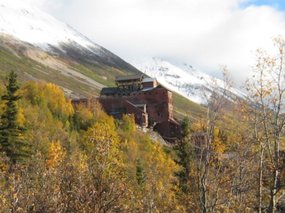
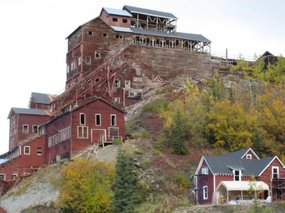
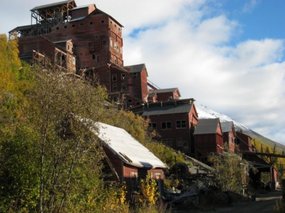
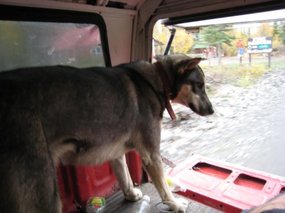
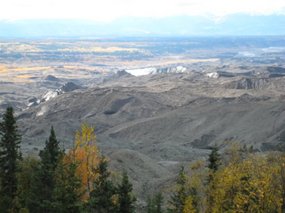
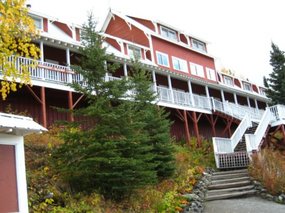
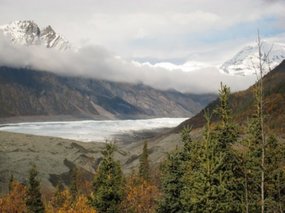



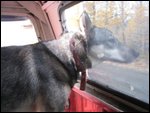
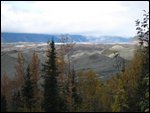
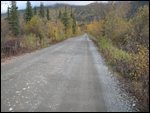
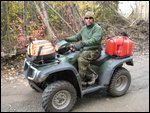
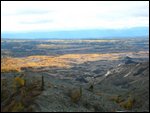

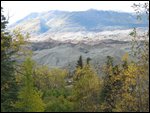
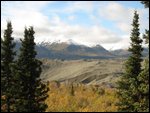


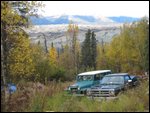

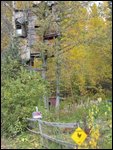
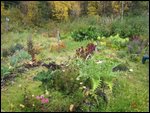
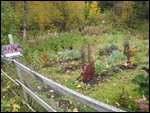

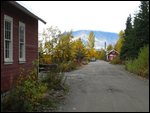
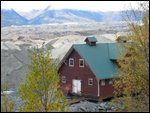
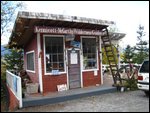
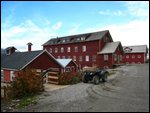
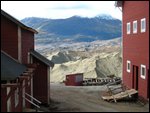
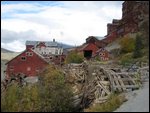
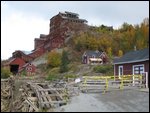
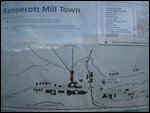
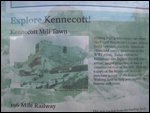
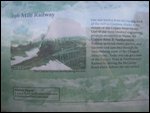

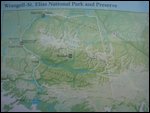
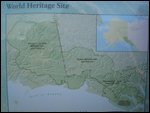
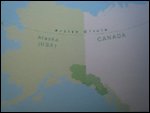
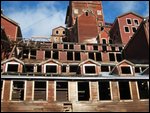
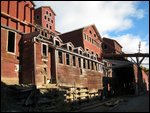
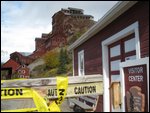
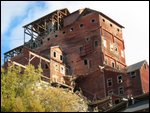
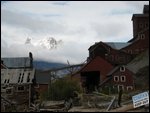
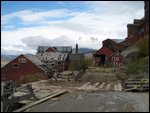
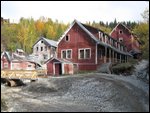
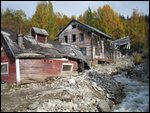
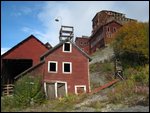
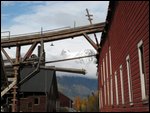
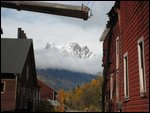
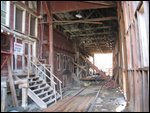

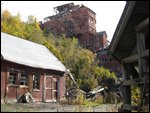
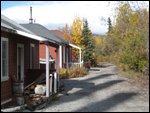
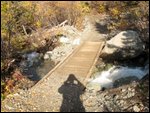
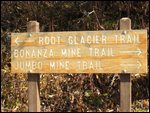
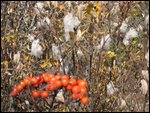
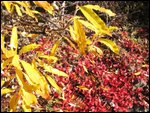
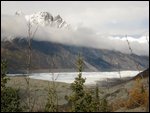
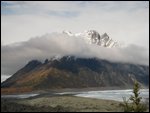
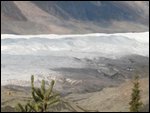
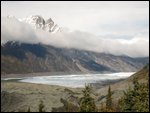

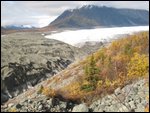
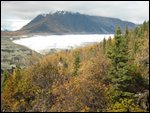
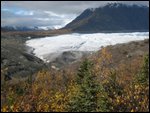
2025-05-22